A Local Problem in Vancouver?
In Vancouver and surrounding regions, lawns and landscapes are facing an increasing threat from underground pests. European chafer beetle grubs are decimating turf, attracting raccoons and birds that rip through grass in search of a meal. Meanwhile, root weevils are chewing through the roots of broadleaf evergreens like rhododendrons, camellias, and laurels. Fortunately, there’s an eco-friendly, highly effective solution: beneficial nematodes.
These microscopic, soil-dwelling organisms act as natural pest control agents, targeting the larvae of destructive pests without harming plants, pets, or people. This comprehensive guide covers everything you need to know about using nematodes in lawn and garden care: what they are, how they work, when and how to apply them, and why they’re especially valuable for the Pacific Northwest climate.
Examples of the chafer beetles damaging lawns & garden and root weevils affecting broadleaf evergreens:
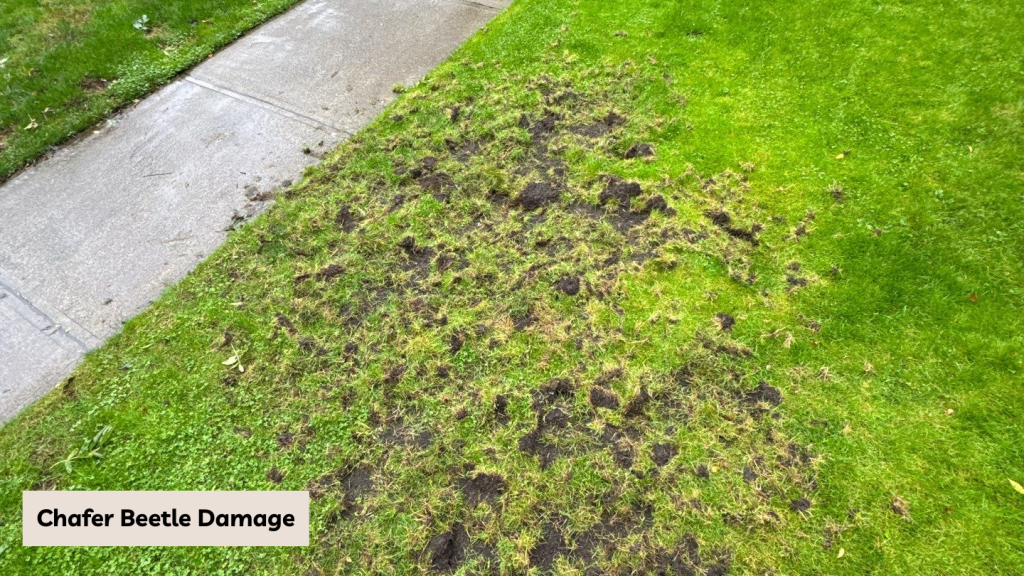
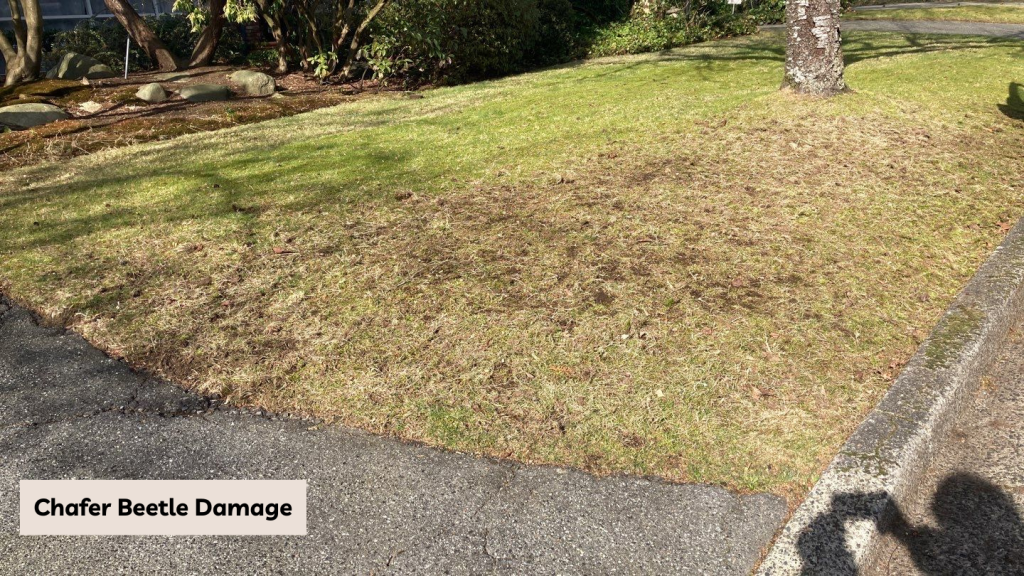
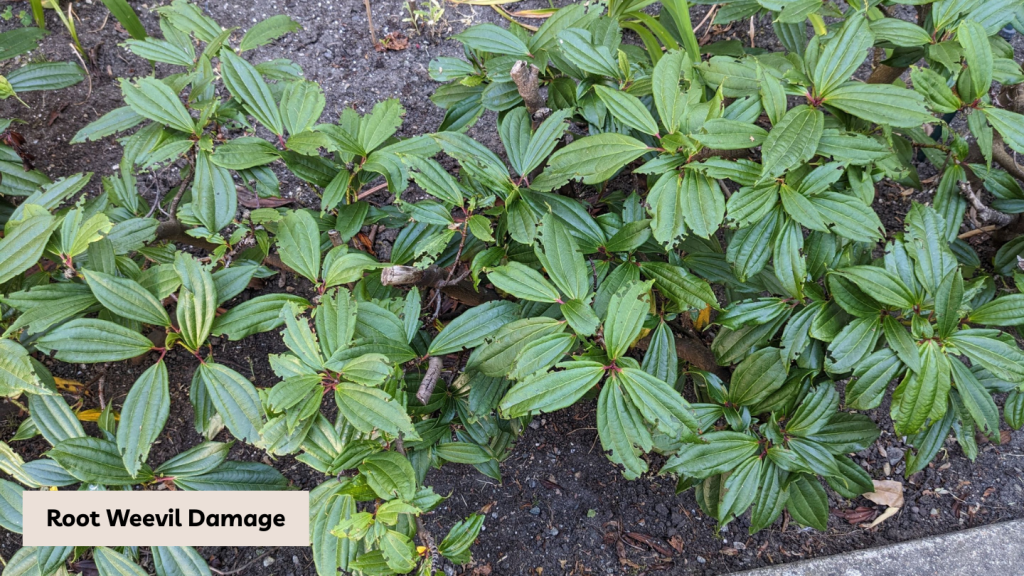
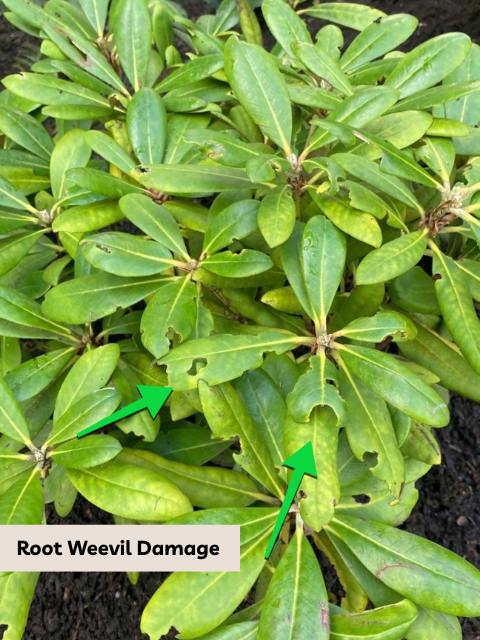
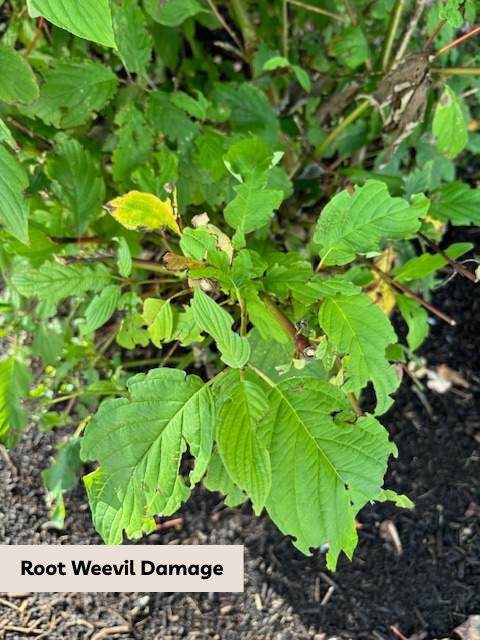
What Are Beneficial Nematodes?
Beneficial nematodes are microscopic, non-segmented roundworms that naturally occur in soils. They are harmless to humans and pets, but deadly to soil-dwelling insect pests. Unlike chemical pesticides, nematodes only target specific pests like grubs and weevils
Once they locate a suitable insect host, the nematodes enter through natural openings and release symbiotic bacteria, which kill the host within 24–48 hours. The nematodes then reproduce inside the insect and seek out new prey. This cycle continues naturally, providing lasting pest control without synthetic inputs.
Beneficial nematodes are a key component of organic pest control, offering a solution that is safe for people, pets, beneficial insects, and the environment.
How Beneficial Nematodes Work
Nematodes locate their prey by detecting carbon dioxide and other chemical signals released by larvae. After entering the host, the nematodes release bacteria from their gut, causing rapid septicemia and death. The nematodes then feed on the bacteria and decomposed host tissue, reproduce, and emerge to continue the cycle.
This biological control process has several advantages:
- It is self-sustaining for several weeks after application.
- It specifically targets pest species without harming beneficial organisms.
- It promotes a healthy soil ecosystem, crucial for turf resilience.
Why Choose Nematodes Over Chemical Treatments?
The use of beneficial nematodes offers several significant advantages compared to traditional chemical pesticides. Below is a summary:
| Advantage | Explanation |
| Environmentally Friendly | No harmful chemicals; safe for soil and water. |
| Safe for People and Pets | No toxic residues; safe immediately after application. |
| No Resistance Development | Pests cannot develop resistance to nematode action as they often do with chemicals. |
| Targeted Control | Nematodes only attack specific insect larvae. |
| Long-Term Effectiveness | Reproduction extends their pest-control capabilities. |
Choosing nematodes supports a holistic, sustainable approach to lawn and garden care, helping to protect your soil and the broader landscape ecosystem
Pests Controlled by Beneficial Nematodes
Beneficial nematodes are highly effective against a range of pests that damage lawns and gardens, particularly those with a soil-borne larval stage. Common targets include:
- Chafer beetle larvae: Responsible for extensive root damage, leading to brown patches.
- Japanese beetle larvae: Feed aggressively on turf roots, affecting lawn density and appearance.
- Cutworms and armyworms: Surface-feeding caterpillars that can cause widespread turf damage.
- Weevils: Notorious for damaging both turfgrass and ornamental plants.
- Fungus gnat larvae and root maggots: Cause root decay and plant health decline.
By eliminating these pests at the larval stage, nematodes prevent serious damage before they appear on the garden surface.
Selecting the Correct Type of Nematodes
Choosing the correct species of nematode is crucial to achieving effective pest control. Different species are specialized for different targets.
| Nematode Species | Target Pests |
| Heterorhabditis bacteriophora | Best for chafer beetle and Japanese beetle larvae (deep soil pests) |
| Steinernema carpocapsae | Effective against surface-dwelling pests such as cutworms and armyworms |
| Steinernema feltiae | Controls fungus gnat larvae and other pests in moist, organic soils |
For lawns suffering from chafer beetle infestations, Heterorhabditis bacteriophora is the recommended species, offering deep soil penetration and strong pest targeting capabilities.
Timing: When to Apply Beneficial Nematodes
Proper timing is critical to the success of nematode treatments. Applications should coincide with the most vulnerable stages of pest development, typically when larvae are young and actively feeding.
- Ideal Season: Late summer through early fall (July to September) for chafer beetles.
- Soil Temperature Requirements: Between 10°C and 30°C (50°F and 86°F).
- Soil Moisture: Soil should be moist before, during, and after application to promote nematode mobility and survival.
Applying nematodes outside these parameters can significantly reduce their effectiveness.
Application Methods for Beneficial Nematodes
Applying nematodes is a straightforward process, but attention to detail ensures maximum results. The steps are as follows:
- Pre-Water the lawn & garden: Apply water to the lawn a few hours before application to ensure the soil is moist.
- Mix the Nematodes Properly: Follow package directions. Maintain agitation to keep nematodes suspended in the solution.
- Evenly Distribute: Use a hose-end sprayer, watering can, or backpack sprayer to distribute nematodes evenly across the lawn.
- Post-Application Watering: Lightly water the lawn immediately after applying nematodes to help them penetrate deeper into the soil.
- Maintain Moisture: Keep the treated area moist for a minimum of two weeks to allow nematodes to locate and infect pests.
Avoid applying nematodes under direct midday sunlight, as UV exposure can kill them.
How to Tell If the Treatment Is Working
Successful nematode applications often lead to visible improvements in the health and vigor of the lawn within three to four weeks. Key signs of success include:
- Reduced presence of birds and mammals digging for grubs.
- Gradual fading of brown or dead patches.
- Stronger root development and thicker turf growth.
- Fewer grubs found when lifting soil samples.
Unlike chemical treatments, biological methods may work more slowly but offer longer-lasting, more resilient results without damaging soil ecology.
Why Consider Professional Nematode Application Services?
Although homeowners can purchase and apply nematodes independently, working with a professional landscaping service ensures better outcomes. Certified professionals can:
- Accurately identify pest species.
- Select the correct nematode strains and application methods.
- Monitor soil conditions and timing for optimal effectiveness.
- Integrate nematode use into a broader soil health and lawn maintenance plan.
By choosing professional application, you can maximize the return on your investment in biological pest control and ensure long-term lawn vitality. For expert assistance, contact our team today for a consultation.
Building a Resilient Garden for the Future
The application of beneficial nematodes is only one part of a complete strategy for sustainable lawn health. Other best practices include:
- Annual lawn aeration: Enhances root growth and soil oxygenation.
- Overseeding with pest-resistant grass varieties: Helps create a denser, more resilient lawn.
- Organic fertilization: Supports beneficial microbial activity and improves soil structure.
- Efficient watering techniques: Deep, infrequent watering encourages strong, drought-resistant roots.
For comprehensive advice on building a healthier lawn, visit our resource on Year-Round Lawn Care Tips.
Conclusion
Beneficial nematodes offer an environmentally friendly, sustainable solution to controlling damaging lawn pests. By understanding how nematodes work, selecting the right species, and applying them properly, homeowners can maintain healthy, vibrant lawns without sacrificing environmental stewardship.
If you are ready to explore the benefits of nematode-based pest control, or if you require professional support tailored to your landscape’s specific needs, contact our expert team today. Protect your green spaces naturally and enjoy a healthier lawn season after season.
Frequently Asked Questions About Beneficial Nematodes
What are beneficial nematodes?
Beneficial nematodes are microscopic, soil-dwelling roundworms that naturally prey on harmful insect larvae. They are used as a form of biological pest control to manage turf and garden pests without chemicals. Once applied to the soil, they seek out pest larvae, enter their bodies, and release symbiotic bacteria that kill the host. This natural cycle helps maintain a healthy lawn ecosystem.
How do beneficial nematodes control pests in my lawn?
Beneficial nematodes locate pests by detecting carbon dioxide and other chemical signals emitted by larvae in the soil. After entering the pest’s body, they release bacteria that quickly cause death. The nematodes then reproduce inside the deceased host and emerge to find new prey. This ongoing biological cycle effectively reduces pest populations without harming the environment or beneficial organisms.
When is the best time to apply beneficial nematodes?
The ideal time to apply beneficial nematodes is during late summer to early fall when pests such as chafer beetle larvae are young and actively feeding near the soil surface. Soil temperatures should be between 10°C and 30°C (50°F–86°F). Moist soil conditions before and after application are critical for nematode mobility and survival.
Are beneficial nematodes safe for humans, pets, and wildlife?
Yes, beneficial nematodes are completely safe for humans, pets, birds, and beneficial insects like bees and butterflies. They are a natural part of the soil ecosystem and target only specific pest species. Unlike chemical pesticides, nematodes leave no toxic residues and do not require restricted access to treated areas after application.
How long does it take for nematodes to work?
Visible results typically appear within three to four weeks after application. Homeowners may notice healthier turf, reduced signs of animal digging, and fewer brown patches. Although nematodes may take slightly longer than chemical treatments to show results, they provide long-term, sustainable pest control without damaging soil health.
How often should beneficial nematodes be applied?
In most cases, a single well-timed application of beneficial nematodes is sufficient to control the current pest population. However, depending on the severity of the infestation and environmental conditions, some properties may benefit from a second application the following season to maintain low pest levels. Regular lawn health practices can further enhance the long-term effectiveness of nematode applications.
Can I apply beneficial nematodes myself, or should I hire a professional?
While it is possible to apply beneficial nematodes yourself using a hose-end sprayer or watering can, hiring a professional lawn care provider ensures optimal results. Professionals can accurately diagnose pest species, select the appropriate nematode strain, and apply treatments under the correct conditions. Professional application also integrates nematode use into broader organic lawn care strategies, maximizing both immediate and long-term benefits.
What pests do beneficial nematodes control?
Beneficial nematodes are effective against a wide range of soil-dwelling pests, including:
- Chafer beetle larvae
- Japanese beetle grubs
- Cutworms
- Armyworms
- Weevils
- Fungus gnat larvae
- Root maggots
By targeting pests in the larval stage, nematodes help prevent significant lawn damage before it becomes visible.
Have a project in mind?

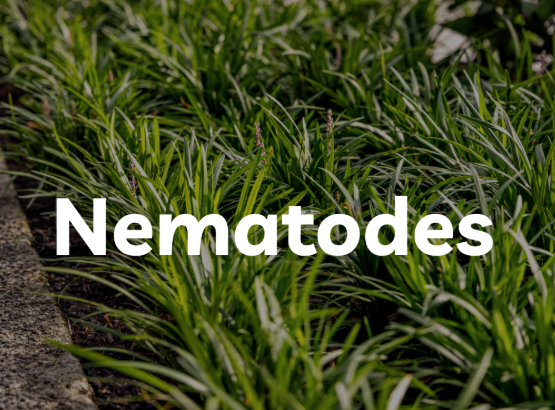


 Contact Us
Contact Us